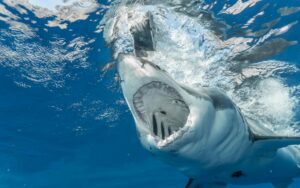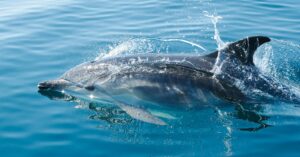The world beneath the waves is filled with fascinating creatures, but few are as enchanting as dugongs and manatees ( Dugong vs Manatee). Often referred to as “sea cows” due to their herbivorous diet and slow-moving nature. These marine mammals share many similarities but are distinct in various ways. This article delves into the intriguing comparison of dugong vs. manatee, exploring their physical characteristics, habitats, behaviors, and the conservation challenges they face.
What Are Dugongs and Manatees? Dugong vs Manatee
Dugongs and manatees are both members of the order Sirenia, a group of aquatic mammals that also includes the extinct Steller’s sea cow. Known for their peaceful demeanor and affinity for seagrasses, these animals play crucial roles in maintaining healthy marine ecosystems.
Dugongs are the only surviving members of the Dugongidae family, while manatees belong to the Trichechidae family. Though they share a common ancestor, these species have evolved separately over millions of years, leading to the differences we see today.
Physical Differences
One of the most noticeable differences between dugongs and manatees lies in their physical features.
Size and Shape
- Dugongs have a more streamlined body and typically grow to about 8–10 feet in length, weighing between 550 and 880 pounds. Their bodies are adapted for a more marine lifestyle.
- Manatees, on the other hand, are slightly bulkier, with lengths ranging from 9–13 feet and weights reaching up to 1,200 pounds.
Tail Shape
- Dugongs have a fluked tail, similar to that of a dolphin. This tail structure allows for efficient movement in open waters.
- Manatees possess a paddle-shaped tail, which is better suited for their preferred habitats of rivers and coastal waters.
Snout and Teeth
- Dugongs have a downturned snout designed for grazing on seagrass, with a few tusk-like incisors in males.
- Manatees have a more rounded snout and continuously replace their molars throughout their lives, an adaptation to their diet of tougher vegetation.
Habitat and Distribution
Dugongs and manatees inhabit different parts of the world, shaped by their distinct ecological preferences.
Dugong Habitat
Dugongs are found in warm coastal waters of the Indo-West Pacific, including the Red Sea, the Arabian Gulf, and the shallow seas around Australia and Southeast Asia. They are strictly marine animals and rely on extensive seagrass meadows for sustenance.
Manatee Habitat
Manatees are more adaptable in their habitats. There are three species of manatees:
- West Indian manatee: Found in the shallow coastal waters of the southeastern United States, the Caribbean, and northern South America.
- Amazonian manatee: Inhabits freshwater systems in the Amazon River basin.
- West African manatee: Lives in rivers, estuaries, and coastal areas of West Africa.
Unlike dugongs, manatees can thrive in both fresh and saltwater environments.
Behavior and Lifestyle
Dugongs and manatees share a slow, gentle nature, but their behaviors differ due to their habitats.
Dugong Behavior
- Dugongs are more solitary, often seen alone or in small groups.
- They spend most of their time grazing on seagrass beds in shallow coastal waters.
Manatee Behavior
- Manatees are more social and can often be seen in larger aggregations, especially during colder months when they seek warm waters.
- They have a wider diet that includes freshwater vegetation and can migrate long distances between feeding and breeding grounds.
Reproduction
Both species have slow reproductive rates, making them vulnerable to population decline.
- Dugongs have a gestation period of about 13–15 months, typically giving birth to a single calf every 3–7 years.
- Manatees have a shorter gestation period of around 12 months, but their reproductive frequency is similar, with one calf born every 2–5 years.
Calves in both species remain dependent on their mothers for up to two years, learning vital survival skills during this time.
Conservation Challenges
Both dugongs and manatees face significant threats, and their populations are declining in many regions.
Threats to Dugongs
- Habitat Loss: Destruction of seagrass meadows due to coastal development and pollution.
- Fishing Nets: Dugongs often become entangled in gillnets, leading to injury or death.
- Boat Strikes: Their slow movement makes them vulnerable to collisions with boats.
Threats to Manatees
- Cold Stress: Manatees are highly susceptible to cold temperatures, often leading to fatalities during winter.
- Water Pollution: Agricultural runoff and industrial waste degrade their habitats.
- Entanglement and Boat Strikes: Similar to dugongs, manatees face significant threats from human activities.
Cultural and Ecological Significance
Dugongs
In many coastal communities, dugongs are revered and hold cultural importance. For instance, in Australia, Indigenous peoples view them as a vital part of their heritage and ecosystems. Dugongs also help maintain the health of seagrass ecosystems, which serve as nurseries for fish and other marine species.
Manatees
Manatees are celebrated in folklore and often symbolize peaceful coexistence with nature. Ecologically, they help prevent overgrowth of aquatic vegetation, maintaining balance in their habitats.
Dugong vs. Manatee: Key Takeaways


Conclusion
While dugongs and manatees share many similarities, their differences reflect unique adaptations to their environments. Dugongs thrive in tropical marine waters, while manatees are versatile inhabitants of both freshwater and marine ecosystems. Understanding these distinctions not only enriches our appreciation for these creatures but also highlights the urgent need to protect them.
By conserving their habitats and addressing human-induced threats, we can ensure that future generations will continue to witness these gentle “sea cows” gliding through the waters, embodying the beauty and fragility of our natural world.
This deep dive into the dugong vs. manatee debate underscores their significance in marine biodiversity. Both species are reminders of the intricate connections within ecosystems and the responsibility we bear to safeguard them.


